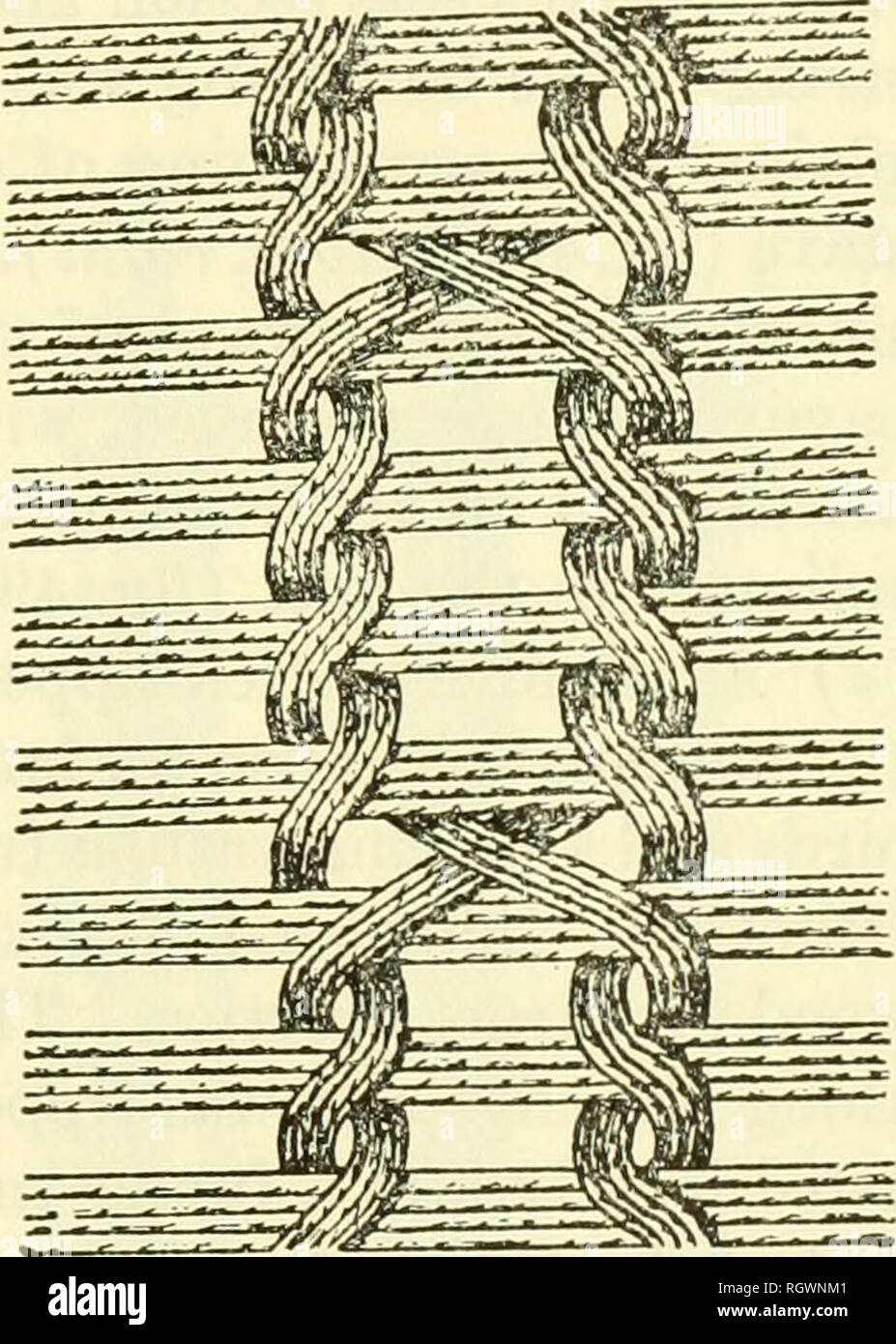. Bulletin. Ethnology. Figure 48. -OuatC twining techniques. Detail of mosquito fan. figs. 128, 129.) (After Max Sclimidt, 1905, Textiles were transitional between basketry and true weaving, all being variations of the twined weave (fig. 48). For mosquito nets, certain mats, and some swatters, the warps were crudely twisted bundles of tucum fiber which were twined together at wide intervals. Other mosquito flaps and wrist guards for shooting bows had a quad- ruple weft twined over a warp—often double—so tightly as to appear. Please note that these images are extracted from scanned page images

Image details
Contributor:
Library Book Collection / Alamy Stock PhotoImage ID:
RGWNM1File size:
7.1 MB (412 KB Compressed download)Releases:
Model - no | Property - noDo I need a release?Dimensions:
1335 x 1871 px | 22.6 x 31.7 cm | 8.9 x 12.5 inches | 150dpiMore information:
This image is a public domain image, which means either that copyright has expired in the image or the copyright holder has waived their copyright. Alamy charges you a fee for access to the high resolution copy of the image.
This image could have imperfections as it’s either historical or reportage.
. Bulletin. Ethnology. Figure 48. -OuatC twining techniques. Detail of mosquito fan. figs. 128, 129.) (After Max Sclimidt, 1905, Textiles were transitional between basketry and true weaving, all being variations of the twined weave (fig. 48). For mosquito nets, certain mats, and some swatters, the warps were crudely twisted bundles of tucum fiber which were twined together at wide intervals. Other mosquito flaps and wrist guards for shooting bows had a quad- ruple weft twined over a warp—often double—so tightly as to appear. Please note that these images are extracted from scanned page images that may have been digitally enhanced for readability - coloration and appearance of these illustrations may not perfectly resemble the original work.. Smithsonian Institution. Bureau of American Ethnology. Washington : G. P. O.